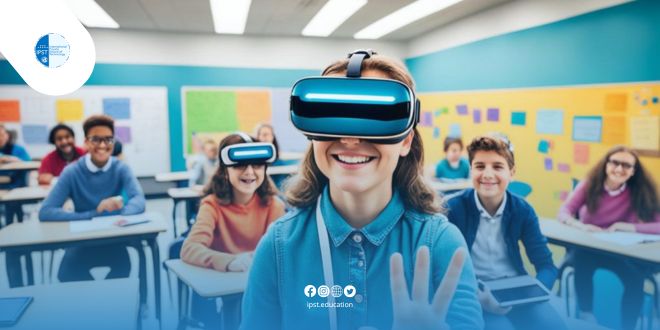With the rapid advancements in artificial intelligence (AI) over recent years, education has become one of the key sectors benefiting from this cutting-edge technology. By 2026, AI-powered educational tools are expected to play a central role in improving the learning experience for both students and teachers. In this article, we will explore some of the AI tools that will transform the education landscape in the near future.
1. AI-Enhanced Learning Platforms
Educational platforms like Coursera and Udemy have started integrating AI to personalize learning content for students. By 2026, these platforms will offer a more customized learning experience based on the student’s progress and learning style. AI will help suggest courses and content that align with the student’s interests and abilities.
Source: EdTech Magazine – How AI is Personalizing Learning Paths
2. Smart Educational Assistants
By 2026, virtual assistants like ChatGPT and Google Assistant will become essential tools in classrooms. These assistants will help students get instant answers to questions, explain complex concepts, and track their academic progress. They will also be able to offer personalized recommendations for improvement.
Source: The Verge – AI-Powered Virtual Assistants in Education
3. AI-Powered Adaptive Learning
AI-driven adaptive learning tools such as Knewton and Smart Sparrow are expected to become even more widespread by 2026. These tools use AI to analyze students’ understanding and adjust the content accordingly. This technology allows for a more effective and faster learning experience, as it tailors lessons to each student’s individual needs.
Source: EdTech Digest – How Adaptive Learning Will Change the Future of Education
4. Augmented and Virtual Reality in Education
AR and VR technologies, integrated with AI, will undergo significant development in education by 2026. These tools will enable students to experience immersive learning environments, such as visiting historical sites or conducting complex science experiments in virtual spaces. This will greatly enhance understanding and retention of the material. An example of this is Alcove, which uses AI-driven virtual reality to create interactive learning experiences.
Source: The Future of Education – The Role of VR and AI in Transforming Learning
5. Smart Assessment Tools
AI-powered assessment tools will evolve rapidly in the coming years. By 2026, these tools will be capable of providing instant, accurate evaluations of students’ performance in exams and other activities. Systems like Gradescope and AI Tutor will be able to assess creative work and complex written texts with fairness and precision.
Source: Inside Higher Ed – How AI Will Revolutionize Assessment
6. AI in Collaborative Learning
AI will play a significant role in enhancing collaborative learning. Platforms like Slack and Microsoft Teams will incorporate AI to organize group work and provide suggestions based on conversations and interactions between students. These tools will improve collaboration and interaction between students and teachers alike.
Source: TechCrunch – AI and Collaborative Learning: A New Era
7. AI in Continuous Education and Professional Training
In 2026, AI-powered tools will help learners acquire the skills they need to advance in their careers through continuous education and professional training. Platforms such as LinkedIn Learning and Coursera for Business will offer personalized learning experiences based on performance data and professional needs.
Source: Forbes – AI in Workforce Learning and Development
Conclusion
By 2026, AI will play a significant role in reshaping how we learn. With adaptive learning tools, smart assistants, and immersive educational experiences, AI will make education more personalized and effective. Students will benefit from more flexible, interactive learning experiences, enabling them to acquire skills more quickly and efficiently. If technology continues to evolve at this pace, education in the future will be a richer, more accurate experience that meets the needs of all learners.
Sources: EdTech Magazine, The Verge, EdTech Digest, Inside Higher Ed, TechCrunch, Forbes.



